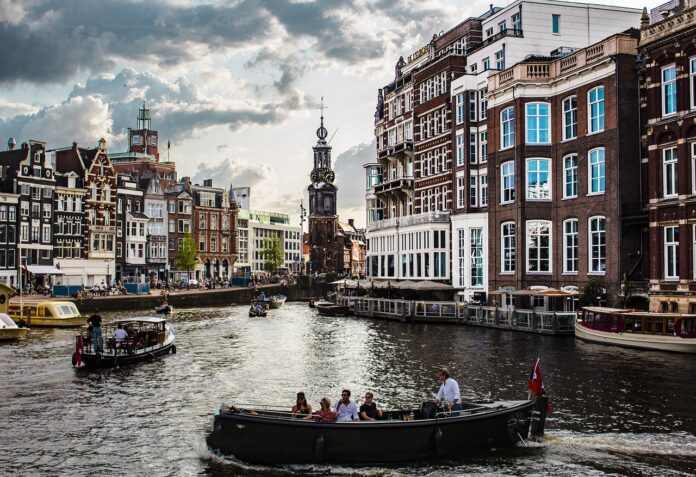15 Interesting Facts About the Netherlands
- Location and Borders: The Netherlands is located in Western Europe. It is bordered by Germany to the east, Belgium to the south, and has a coastline along the North Sea to the northwest. The country also includes several islands in the Caribbean Sea, known as the Caribbean Netherlands.
- Square: The country covers an area of approximately 41,850 square kilometers.
- National Currency: The currency of the Netherlands is the Euro (EUR).
Interesting Facts About the Netherlands:
- Land Reclamation: About one-third of the Netherlands lies below sea level. The Dutch are famous for their land reclamation projects, turning parts of the sea into land. The most famous example is the Zuiderzee Works, which created the IJsselmeer and large polders, including Flevoland, the largest artificial island in the world.
- Water Management: The Dutch have an intricate system of dikes, dams, and floodgates to manage water levels and prevent flooding. The Delta Works, a series of constructions built after the North Sea Flood of 1953, are considered one of the Seven Wonders of the Modern World.
- Tulips: The Netherlands is the world’s largest exporter of tulips. The flower was first introduced from the Ottoman Empire in the 16th century, and it became so popular that it sparked “Tulip Mania” in the 1630s, considered the first recorded speculative bubble.
- Cycling Culture: With over 35,000 kilometers of cycling paths, the Netherlands is one of the most bike-friendly countries in the world. There are more bicycles than people, and cycling is a primary mode of transportation.
- Legal Landscape: The Netherlands is known for its liberal policies on various social issues, including drug decriminalization, euthanasia, and same-sex marriage. It was the first country to legalize same-sex marriage in 2001.
- Art and Culture: The Netherlands has a rich artistic heritage. It is the birthplace of renowned painters like Rembrandt, Vermeer, Van Gogh, and Mondrian. The country is also famous for its museums, such as the Rijksmuseum, the Van Gogh Museum, and the Anne Frank House.
- Windmills: Traditional windmills are iconic symbols of the Netherlands. Historically, they were used for a variety of purposes, including pumping water, grinding grain, and sawing wood. The most famous concentration of windmills can be found at Kinderdijk and Zaanse Schans.
- Diverse Architecture: Dutch architecture is known for its distinctive style. Amsterdam’s canal houses, with their narrow, tall facades and large windows, are particularly famous. Modern Dutch architecture, exemplified by structures like the Erasmus Bridge in Rotterdam, is also celebrated.
- Cheese Production: The Netherlands is one of the world’s largest exporters of cheese. Popular Dutch cheeses include Gouda, Edam, and Leyden. The country has several cheese markets, with the Alkmaar Cheese Market being one of the most famous.
- Language: Dutch is the official language, but English is widely spoken. Many Dutch people are multilingual, often speaking German and French as well.
- King’s Day: King’s Day, celebrated on April 27th, is a national holiday honoring the birthday of King Willem-Alexander. It’s marked by street parties, concerts, and a nationwide flea market, with everyone dressing in orange, the national color.
- Wind Turbines: In addition to traditional windmills, the Netherlands is a leader in renewable energy. The country has numerous wind farms, both onshore and offshore, contributing significantly to its energy needs.
- Football: Football (soccer) is the most popular sport in the Netherlands. The national team, known as the Oranje, has a strong international presence, and the Dutch Eredivisie is one of Europe’s top football leagues.
- Innovative Agriculture: The Netherlands is the second-largest exporter of agricultural products in the world, despite its small size. Innovative farming techniques, such as vertical farming and precision agriculture, contribute to this success.
- Public Transport: The Dutch public transport system is highly efficient, with an extensive network of trains, trams, buses, and ferries. The OV-chipkaart is a smart card used for all modes of public transport.
